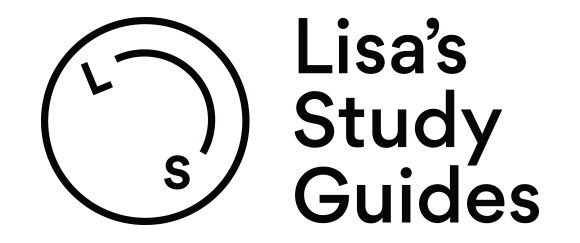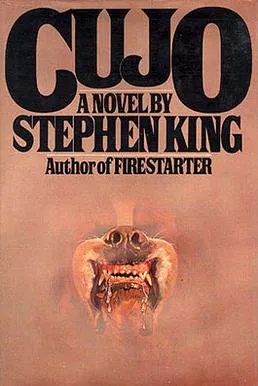With the Literary Perspectives essay can come mild confusion regarding its structure, extent (as well as form) of analysis and differentiability from your standard English text response - which is why I’m here to tell you that this confusion, while inevitable, is easily overcome! A text like Cat on a Hot Tin Roof is rife with complexities in both its narrative features and literary devices, all prime for discussion in your own essay.
Consider the following prompt: “Discuss the proposition that ‘Cat on a Hot Tin Roof’ is a condemnation of 1950’s American society.”
Don’t let this prompt’s simple exterior fool you. What it leaves room for - and what the assessor will ultimately be looking for - is the development of your own complex ideas. It is this metamorphosis from the simple to complex that, when evident in your own writing, allows your essay to truly shine. This is obviously applicable to English as well, but where a clear fork in the road lies is in the act of grouping those complex ideas under the umbrella of a specific critical lens (or multiple!).
For instance, this specific prompt is great in how a diverse range of literary perspectives can be applied to it due to its main subject being 1950s American society. These can include: feminist, psychoanalytical, queer, New Historicist, Marxist, and I’m sure many others!
When faced with a number of critical lenses you can choose from, it’s important to keep in mind the fact that focusing your essay on mainly two or three lenses will ensure it’s more streamlined and therefore easier to both write and read. I know incorporating more lenses as a means of adding variety within your essay is quite tempting, but this is sure to both hinder the depth of your analysis/discussion - which is where marks are ultimately rewarded - and run the risk of disrupting any form of cohesion in your writing. The lenses you choose will ultimately be dependent on the extent of their applicability to the prompt and how comfortable you are with using them (i.e don’t use a Marxist lens if you don’t know how to extensively discuss social classes). The combination of lenses you choose, coupled with your own interpretation, help to inform the development of your unique perspective of the text.
For this prompt, I personally chose to focus on using the critical lenses of New Historicism, psychoanalysis and queer theory. From here, I’m able to ask myself questions catered to each perspective such as “What specific cultural values are examined in COAHTR and how does Williams present them?” and, relating this to the prompt at hand by also asking: “Is this presentation condemnatory?”. The lenses you choose should be interlinked with your arguments and thus your analyses, enabling you to show the assessor you understand that this isn’t an English text response!
Introduction
A frequently asked question regarding the intro of a literary perspectives essay is whether or not to state the critical lens/es you are using. The answer to this is that it’s ultimately up to you! Some important points to consider however are:
- Am I able to include this statement without it sounding janky and disruptive of flow?
- If I were not to include it, am I able to make it clear enough to the assessor from the get-go what perspective/s I am using?
Outside of that, a literary perspectives intro is pretty similar to that of any other essay. One thing to remember however, especially with COAHTR, is to briefly explain certain significant concepts you choose to mention. A good example of this is the American Dream - demonstrating that you understand what it is at its core via a brief explanation in your intro is going to leave a far better impression on the assessor than not elaborating on it at all.
See mine below:
“Defined by its moral incongruity against socially upheld conservative values, Tennessee Williams’ play Cat on a Hot Tin Roof illuminates the debilitative effects of subscription to a belief system entrenched in immorality. By highlighting the ways in which values such as heteronormativity and the American Dream — deemed synonymous with “equal opportunity” — serve only as obstructions to genuine human connection, Williams underpins both his condemnation of such mores and, therefore, the eminent human struggle to attain true happiness."
As you can see, I personally chose not to explicitly state what critical lenses I was using in my essay. However, I did make sure to include certain words and phrases commonly associated with the critical lenses they represent.
For example:
- New Historicism: “socially upheld conservative values”, “belief system”, “values such as heteronormativity and the American Dream”
- Psychoanalytical: “moral incongruity”, “human connection/struggle to attain true happiness”
- Queer theory: “heteronormativity”
This allows me to inform the assessor of what lenses I'm using in spite of an absent explicit statement. It’s also far more efficient in this case than having to use the janky phrase “Under the critical lenses of New Historicism, psychoanalysis and queer theory…”.
Body paragraphs:
As I'm sure you already know by now, Literature grants you a lot more freedom than English in terms of structure - and this is especially applicable to the body of your essay! It's important however to find a balance between what structure you’re most comfortable writing with and what’s going to impress the assessor (as opposed to abusing this freedom and floundering about with zero cohesion).
What I personally tend to be comfortable doing is loosely following a TEEL structure, while spicing it up a little by switching around the order here and there. This is especially evident in my first body paragraph below for the aforementioned prompt, in which I begin with some passage analysis rather than your typical topic sentence:
“Positioning the audience within an American plantation home’s “bed-sitting-room”, Williams immediately envelops the play’s moral foreground in domesticity and the conservative mores of 1950s American society that serve to define such an atmosphere. It being the bedroom of heterosexual couple Brick and Maggie evinces the nature of their exchanges as demonstrative of the morally debilitating effects of the values upheld by the society in which they live — illuminating Williams’ intention to present social mores as obstructive of genuine human connection. Such an intention is foregrounded by the disparity that exists between the external and internal; that is, the socially upheld status of Brick and Maggie’s heterosexual relationship — exempt from subjection to social “disgust” — and the “mendacious” reality of their marriage in its failure to provide either individual with the same sense of primordial wholeness Brick finds in his “clean”, “pure” and “true” homosocial relationship with Skipper. From the outset of the play, heteronormative values are debased as Williams subverts the domestically epitomised dynamic between husband and wife into an embodiment of the inhumane. Maggie is likened to a “priest delivering a liturgical chant”, her lines interspersed with “wordless singing” — alluding to her overly performative nature that compromises the genuineness of human connection. Brick’s visual absence during the play’s opening and his “masked indifference”, too, further undermine the social perception of heterosexuality as the pinnacle of love as it is this reticence that exemplifies the absence of happiness found in their marriage. This sense of disconnection, wherein “living with someone you love can be lonelier — than living entirely alone”, forces Maggie to navigate their relationship through the reductive mode of a “game” wherein it is only by detecting “a sign of nerves in a player on the defensive” that she can attempt to derive genuine emotion from her husband. To reduce human connection to a set of manoeuvrable tactics punctuated only by “the click of mallets” is an act portrayed by Williams as propagative of immorality, vehemently contrasting the reconciliation of the divided self afforded to Brick by the “one, great true thing” in his life: friendship with Skipper. By making the audience privy to the inhumanity lying at the helm of 1950s American social mores, Williams thus presents his scathing critique of such a system, reflecting its capacity for obstructing human connection and therefore the futility of conforming to its standards.”
A key feature of this paragraph is the nature of my analysis - it is, essentially, very similar to what you’d find in a passage analysis essay. It’s important to note that the skills you’ve learnt for the latter can be easily implemented in a literary perspectives essay and is often what allows it to truly stand out! It also forces you to frequently reference the text with quotes in the same way you would in a passage analysis essay, which is glorious in any assessor’s eyes.
With “zooming in” on certain passages in the text (think analysing literary devices, setting, syntax, etc.) however must also follow “zooming out” and evaluating their overall meaning, especially in relation to their significance to the prompt.
A concise example of “zooming in and out” from the previous paragraph can be seen below:
“Maggie is likened to a “priest delivering a liturgical chant”, her lines interspersed with “wordless singing” — alluding to her overly performative nature that compromises the genuineness of human connection.”
Below is another example from a different body paragraph for the same essay:
“Hateful figures transformed into animalistic grotesques, the children of Mae and Gooper are depicted as “no-neck monsters” with “dawg’s names”, with the “fat old body” of Big Mama herself alternating in appearance from “an old bulldog” to a “charging rhino”. Here the moral degradation of a society so heavily reliant on the atomisation of its individuals is made most conspicuous, with Big Daddy’s semblance to a large animal who “pants and wheezes and sniffs” serving as a further testament to such a notion.”
Conclusion:
This is yet another portion of your essay granted freedom by the nature of VCE Literature, so whether or not you choose to intertwine it with your last body paragraph or separate it completely is entirely up to you. What you choose to emphasise in your conclusion is also very similar to that of any other essay as the main focus is to hammer home your interpretation of the text in relation to the prompt!
See my example below:
“Williams, by presenting 1950’s American society as both propagative of atomisation and obstructive of innate morality, ultimately highlights the futility that lies in assimilating to such a belief system as a means of attaining true happiness. The pressure to subscribe to morally reductive values wherein any remnants of the innate are wholly ignored only further shrouds the possibility of happiness at all, and it is here where Williams’ portrayal of the human struggle to attain this ideal is made most conspicuous.”





%20(2).webp)




.jpg)